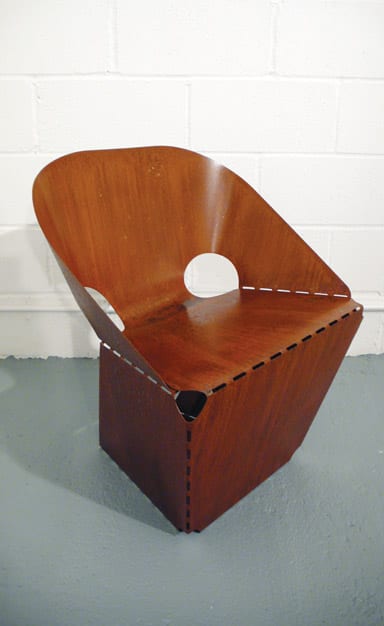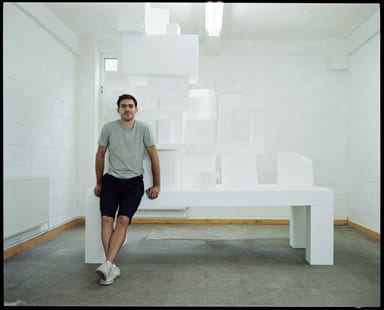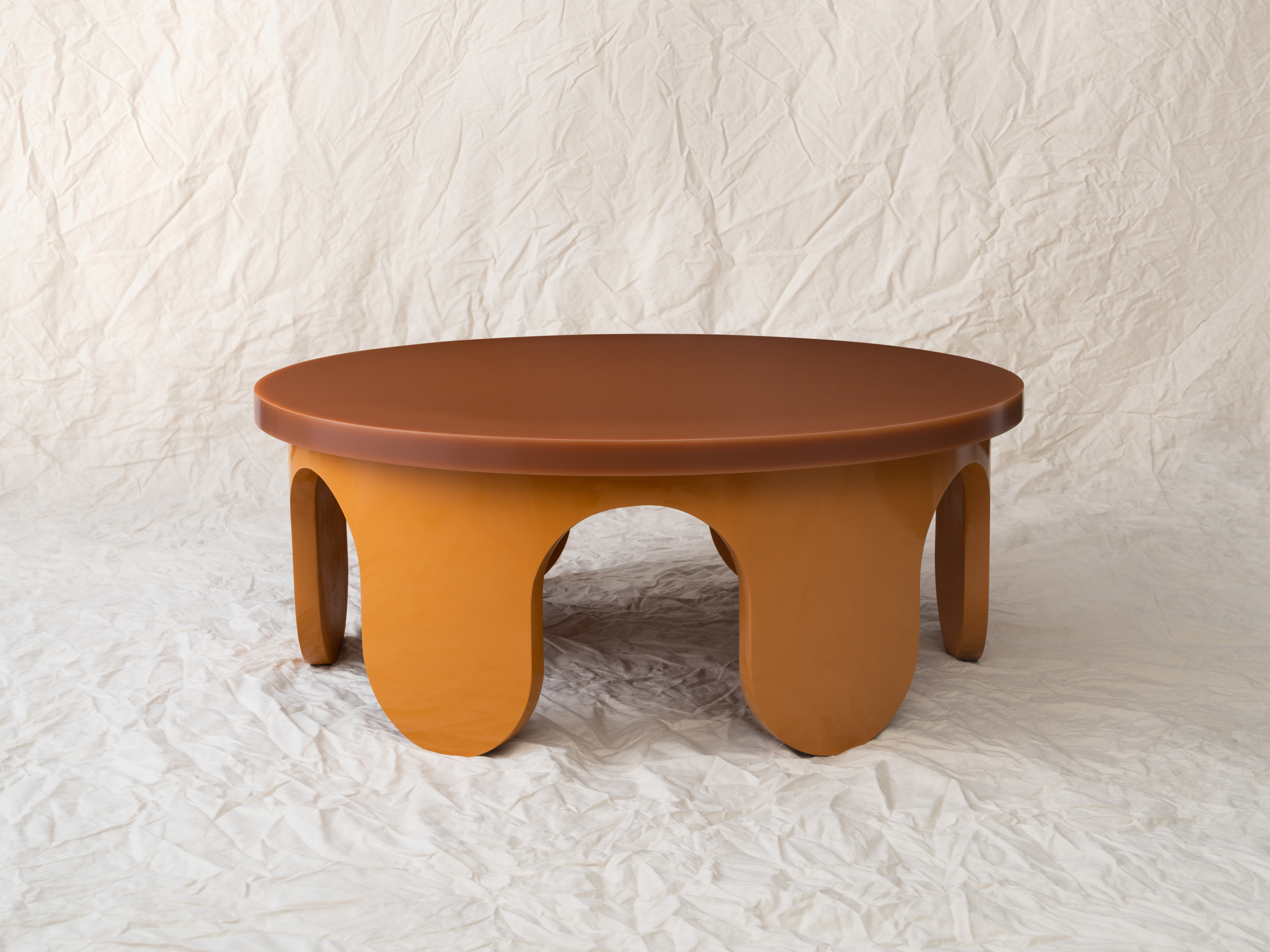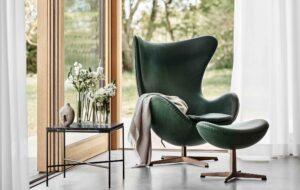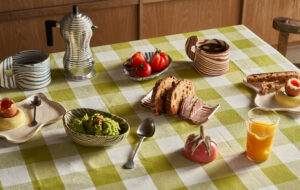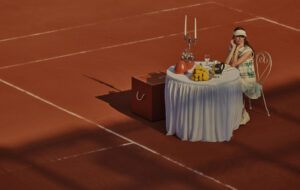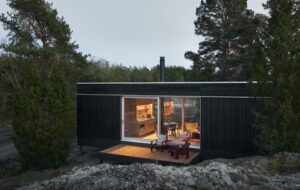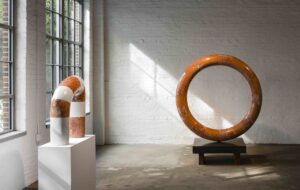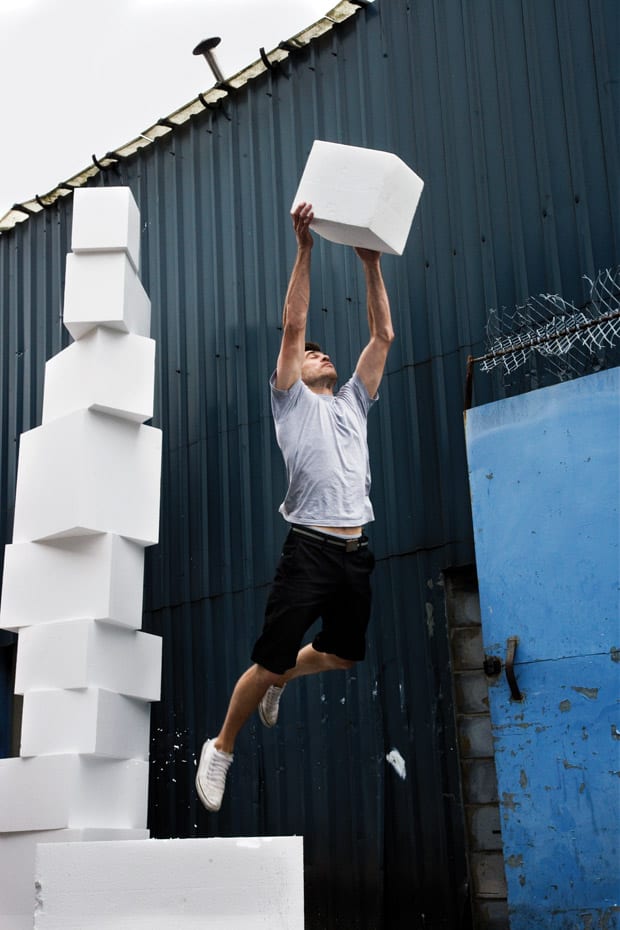
words Anna Bates
“I’m a bit bored of polystyrene,” says max lamb.
“I wish I hadn’t said yes to all of this,” he adds, sounding annoyed. We’ve just stepped into his studio, and he’s gazing at a tower of giant polystyrene cubes.
The cubes are waiting for the designer to attack them with a saw, claw hammer and fingernails – a method of making furniture that’s become his trademark. And however bored of the material he is, the pieces are in high demand.
Max Lamb is about as successful as anyone who graduated only two years ago can be. Several galleries are selling the polystyrene work, and a London fashion store is waiting for a counter and clothes rails to be carved out of the stuff. The British designer is also working on a solo show, a commercial product for Habitat and a chair for Gallery Libby Sellers. He’s just taught a term at Swiss design school Ecal, and spent the year before last designing limited-edition pieces for Tom Dixon’s company. It would be a hectic schedule for any established designer, and Lamb is only 27.
Lamb looks a bit like an action hero; his forearms are built for mountain climbing. If nothing else, his intense, energetic persona has forced the design scene to take notice. He says yes to everything – but consequently he’s doing too much. And it’s not the first time he’s suffered from his over-ambition. At the RCA, Lamb was criticised by Ron Arad, head of design products, for doing too many projects and not doing any of them well enough. “Arad said to me, ‘The more pieces you remove from your [graduation] show the better your show will be’,” says Lamb. “I thought – wow, those are strong words.”
Defiant, Lamb put out two more projects and graduated with plaudits from his tutors and the media. But his current to-do list hints at some truth in Arad’s comments. It also raises questions about how successful Lamb is at developing a design – but we’ll come to that later.
Lamb lives and works in a north London studio around the corner from a brothel and below some circus acrobats; his studio is distinguished by the collection of pot plants and handmade stools in front of it. We sit down with a cup of tea, and Lamb tells me about his recent trip to a quarry in New York State, gathering material for furniture pieces. He speaks eloquently, at length, without pausing – he’s an Olympic talker. Listening to him can be very entertaining, but he can also wear you down with exhaustive explanations. On the subject of how much stone you’re allowed to extract from the quarry, he says: “There was a new legislation brought in by the local government – the government – the department for environmental protection – the DEP – this legislation is to control the amount of stone being quarried …”
This is typical Lamb dialogue, intensified because he’s talking about his real passion: the outdoors. Lamb didn’t actually want to be a designer – after he graduated from a BA in design at Northumbria, he planned to become a snowboarding instructor; he thought it would be a more reliable career. But he’s since learned to combine both his passions, by using the landscape in his design processes. One of Lamb’s most successful graduation pieces was executed on a stretch of Cornish coastline near where he grew up. He made his triangular Pewter Stool by pouring molten pewter into a cavity he carved out of the sand. The mass-production technique of sand-casting was stripped from its context and romanticised. In this instance, Lamb did for a banal process what Stuart Haygarth does for everyday objects: he made us look at it afresh.
Lamb also uses the outdoors as a raw material. In his Quarry Series, he makes work on site using the stone around him – slicing out seats from boulders to make chairs and finding legs for a sheet of stone that suggests “table-top”. There’s no computer involved here – Lamb ventures out with a sketchbook of ideas under his arm. “But I’m never committed to them,” he says. “I’ll do what the material tells me.”
The problem is these do look a bit like the sort of thing you see for sale in garden centres, and Lamb does see a similarity to “something you see commercially in adverts at the back of magazines – stone creations”. “But,” Lamb says, “the pieces you see in magazines apply the same design to every piece of stone. I look for boulders, rocks and stones that have a very intriguing shape. I find a natural seam – a place that suggests I cut. Every stone suggests a different thing.” Lamb oversees the cut of the stone with a circular saw and he chips away at the rock with a stonemason’s hammer and chisels. But he doesn’t want to manipulate the material in any way – one chair consists of two already split rocks, slightly altered so they comfortably prop up against each other. It’s so untouched that the quarry workers suggested that perhaps he could include some armrests and a cup-holder.
“But I’m not designing,” says Lamb. “In a way, this is where I lose my identity as a designer.”
This is Lamb at his most raw: getting lost in the material, forgetting the designing bit. It’s what lost Ron Arad. But as far as he is concerned, forming a design and applying it to a material is “working backwards”, and he is critical of our generation of “ideas” designers. “I like the image of Maarten Baas’ work,” he says, by way of example. “His pieces are fantastic-looking. But I don’t respect the execution of them so much.” He’s referring to Baas’ Clay furniture – not actually made of clay but of resin, squeezed around a steel frame.
When he’s prepared to push the design aspect, he develops ideas with considerable skill. More recently, his understanding of both craft and mass-production techniques has seen him start to layer his processes in unique and interesting ways.
His Poly furniture (a series that uses “designed to throw-away” polystyrene as a primary material) evolved from doing exactly what you want to do to polystyrene – pick at it. Rapidly shaped from a block using a saw, hammer and fingernails, Lamb sees the series as handmade mass production. He found a spray-on rubber that dries in 13 seconds to seal the job. But in forming the pieces, another concept came to his mind: lost-wax casting, with foam instead of wax. The technique involves covering a polystyrene form in compressed sand and injecting it with molten bronze. The bronze burns away the polystyrene and fills the resulting void – with a little alchemy, foam is thus transmuted into metal.
There’s an honesty to Lamb’s methodical work; form doesn’t follow function (although he’s aware of “ergonomics and anthropometrics”), it follows intuition. He behaves like a sculptor – his design process is one of reduction. He starts with the whole, just as it is delivered: a block of polystyrene from the manufacturer, or a boulder from the quarry. For his Sheet Steel Chair, he starts with the steel sheet and then laser-cuts the chair out – exactly like a paper pattern – before folding along “score lines” and sticking it together with industrial double-sided tape. He’s led by the material, but in every case, the hand is everything. Lamb works like a craftsman, whittling a product out of the raw material – reducing it until a piece of furniture is formed. It would be impossible for him to form a workshop of people emulating his technique.
That hasn’t stopped Habitat from producing one of Lamb’s pieces, taking him from the gallery to the high street. The piece is an extension of Pewter Stool – but made of aluminium, and a pit of silicon sand in India is used in place of the Cornish coastline, re-industrialising the process, but stripping it of the narrative that gave it so much charm. Nevertheless, for a hands-on, craft-oriented designer, working with Habitat has been surprisingly painless. He’s now working on his sixth model, but the process has only been complicated by language barriers and shipping times.
Lamb is clearly following in the footsteps of London’s most successful independent designer, Tom Dixon – a comparison he himself makes: “All these different processes I’ve been playing with, in an experimental, hands-on way – that’s how he used to work before he set up Tom Dixon Limited.” Like the young Dixon, Lamb has found a way of surviving as a designer in London: “You have to be economical,” he says, and use what materials come to hand. His next plan is to design pieces out of a tree in his grandfather’s farm. But he’s also interested in developing his own processes – inspired by an artist who hitched up a car, removed a wheel and used the axle as a spindle for the lathe. It’s about being imaginative, but it’s also about being thrifty. “You have to find your own way of doing things – you have to use the resources that are there and available because to constantly buy raw materials can be very expensive. Sometimes I think, ‘God I’m lazy!’ But really, it’s just about being clever.”
All images: Jo Metson Scott
